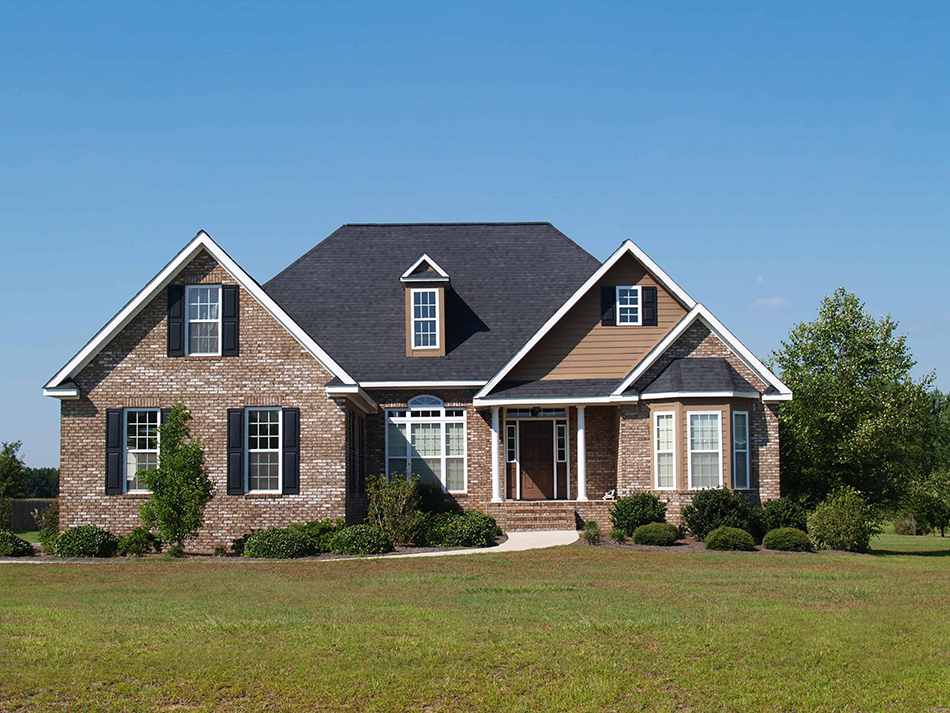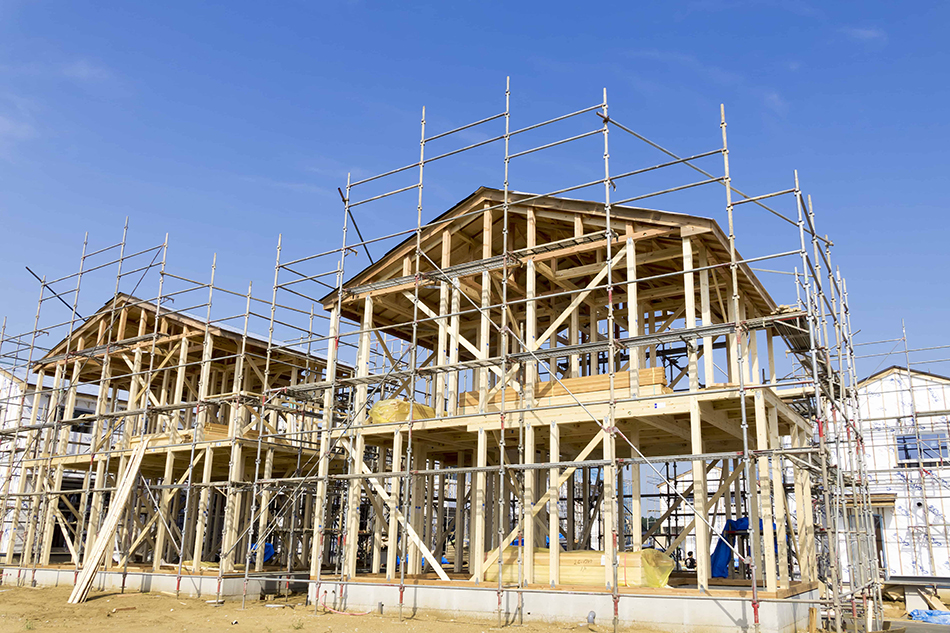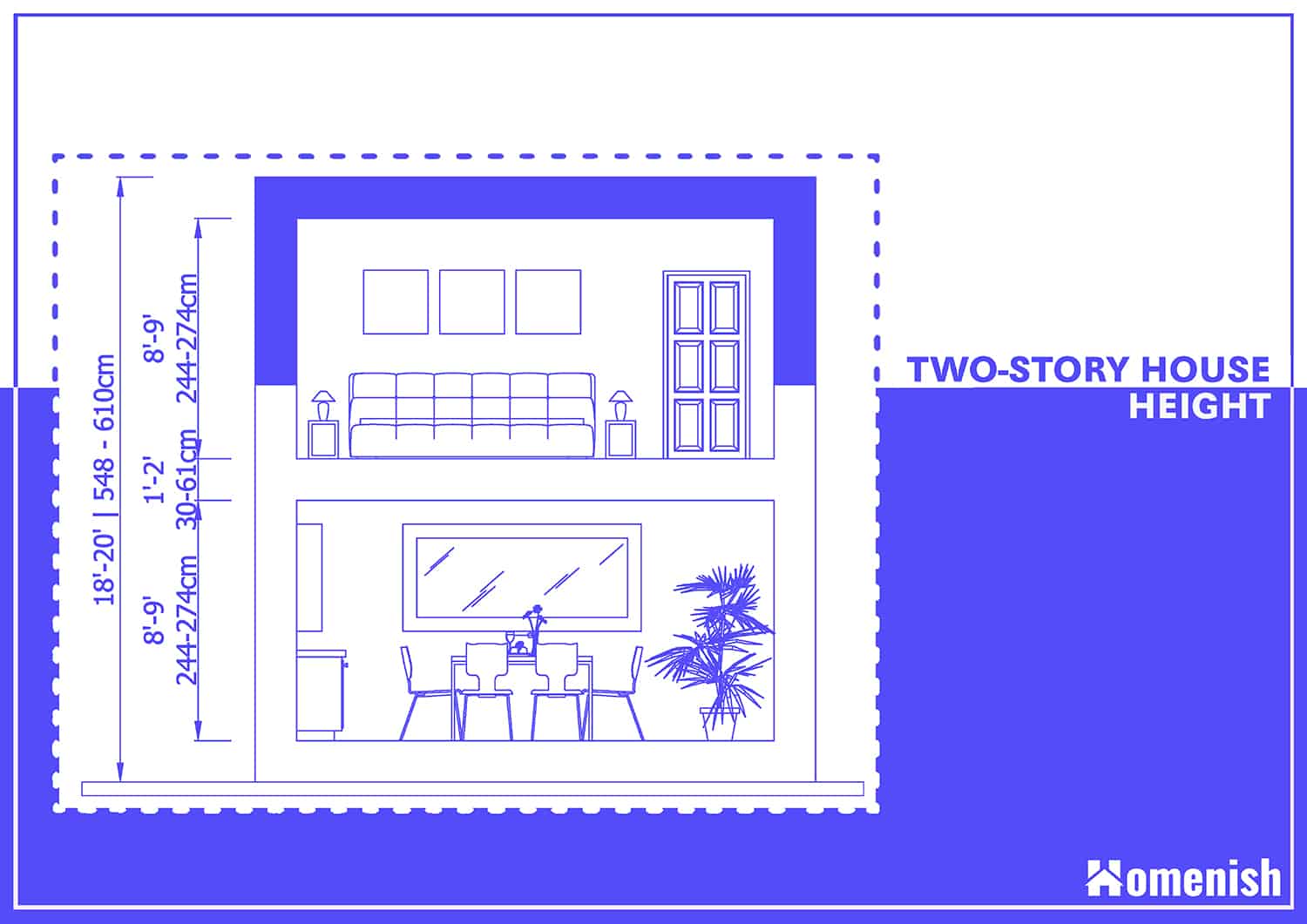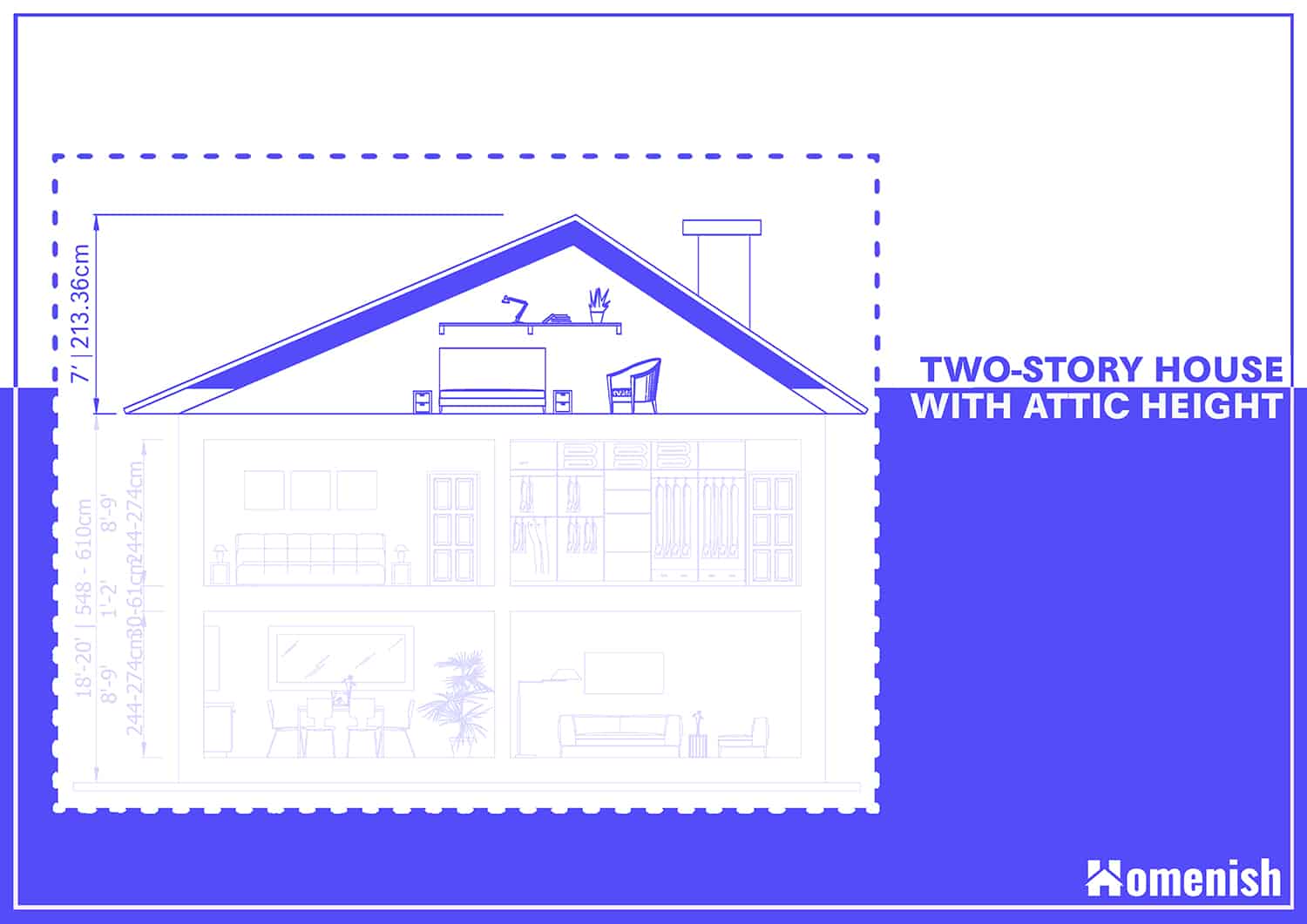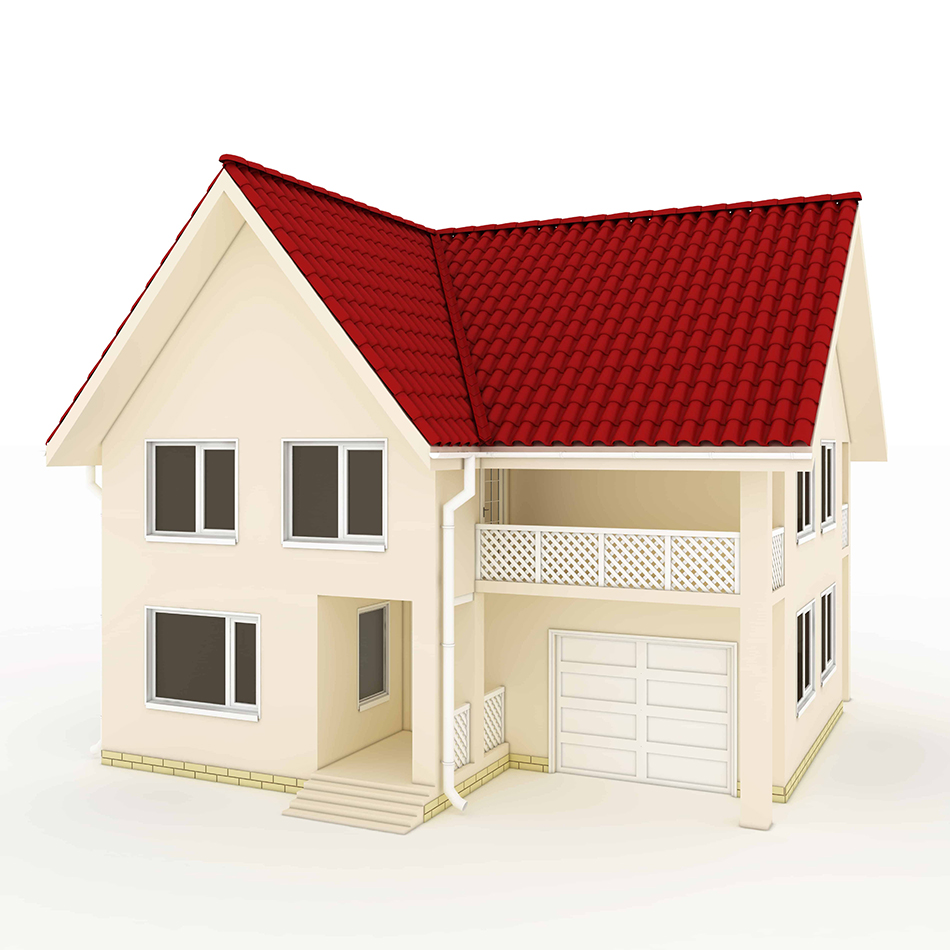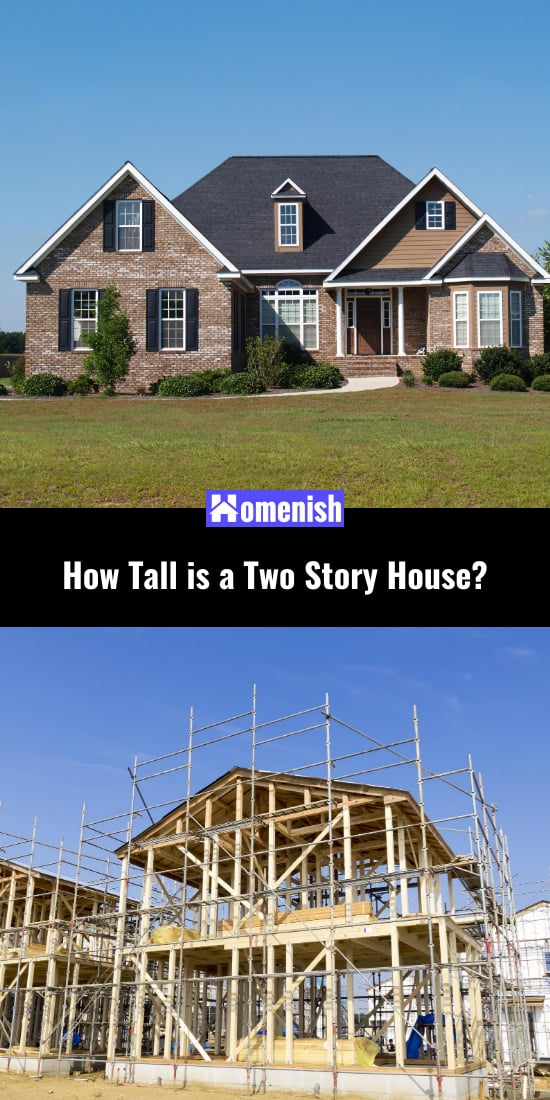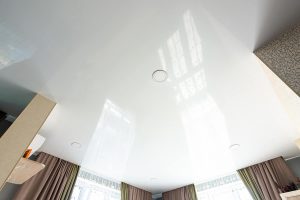A level part of a building with a floor is commonly referred to as a story or storey. Most people utilize the story as a measuring unit of the building to determine its height. However, due to local laws and construction methods, the height of a story can greatly vary.
So the question is, how tall is a two-story house? Here we will take a closer look at the standard height of two-story homes based on different factors as well as provide you with some useful information on how you can measure the height of your home.
Here is a quick answer.
In most US states, a standard two-story house will be 18 – 20 feet in height. The first floor will be around 10 feet (with 8 – 9 feet ceiling height, and 1-2 feet of infrasture or floor depth. The second floor’s height is typically 1 foot shorter than that of the first floor at 9 feet. If the two-story house has an attic, the total height will be around 25 – 27′.
The Standard Height of a Story and its Structure
The height of a standard story is roughly around 10 feet. This is assuming that the ceiling height is between 8 and 9 feet with 1-2 feet of infrasture thickness. But this is not set in stone as different states have their own story height laws. Stories within the same building can have different height variations.
As you add more stories to the building, the upper floors will have slightly less height than the ones underneath, typically 1 inch shorter. The loft, for example, will have an entirely different height compared to the lower floors as this space is designed to specifically meet the owner’s preferences.
In Europe, two-story homes have an average height of 16 feet.
In many US states, the standard 2-story residential buildings are as tall as 18-20 feet. This is considered a comfortable height in order to allow aesthetic space. Such homes have typical ceiling heights of 9 feet on the first floor and 10 feet ceilings on the second floor.
In homes with higher than 10 feet ceilings, the height of the building can be as tall as 30 feet!
Two Story House with Attic Height
If the house has an attic, the standard height for a habitable attic is 7 feet. As such, the two-story house with an attic will have a height of 25 – 27 feet.
Other Factors that Affect the Building’s Height
There are a few factors that affect the height of a two-story residential building. These are:
Ceiling Height
How high the ceiling on the first floor might affect the height of the entire building. Builders usually allow some extra ceiling height for the first floor, with the second floor about one or two feet shorter.
For example, a two-story home with 9-foot ceilings on the first floor is likely to have an 8-foot high ceiling on the second story. We must also allow an extra foot as the floor depth, which brings the total height of a 2 story home to 19 feet.
Attic Space
If the two-story house has an attic, this extra space will also affect the final height of the building. An average attic has a ceiling height of at least 7 feet. This is the minimum height to meet the local building code requirements. So if your two-story building has an attic, the total height of the house comes to 26 feet.
Roof Type
There is also the roof pitch or style that can affect the total height of a two-story residential building. Steep roofs raise the building height by several feet, while the less common flat roofs won’t add any extra height at all. The following roof styles can increase the total height of a two-story residential building:
- Mansard
- Gable
- Saltbox
- Gambrel
- Hip
- Skillion
Any of these roof types can add some footage to the two-story building’s total height. So if you’re calculating the height of your two-story home, or you want to build a two-story home, you must take the style of the roof into account as well as make sure you meet the local code requirements.
How to Measure Your Two-Story Building Height
The building height of a two story building is measured from 2 feet of its foundation wall to the highest point on the structure. The height is measured as the vertical distance to the tallest point of the deck line. The standard practice when calculating the residential building height is to configure the highest point of the building, without taking into account the architectural elements, such as skylights or chimneys.
The vertical distance between the completed grade and the building’s highest point assumes that the measurement doesn’t include berms. However, if the building is on sloped land, its height is measured from the average completed grade to the building’s highest point.
In order to calculate the completed grade, at least 3 points of the building are marked on elevations, one at the midpoint and the other two at each end of the elevation. The vertical measurements of the highest point on the building are the average for the building height.
But what if the two-story residential building has more than one elevation? In this instance, you would need to identify the highest point on the structure and draw a horizontal line from that point to each elevation. Start from one end of the building within two feet of the foundation wall all the way to the highest point of the roof. Add all your dimensions together and divide them by 3 to get the total building height.
Aside from chimneys and skylights, are there any other building features that are excluded from the height calculations of the building? Antennas, smoke and ventilation points, satellite dish, and flagpoles are not included in the building height.
Conclusion
Calculating the average height of a two-story house may seem difficult, but by taking a few factors into accounts, such as the ceiling height of each floor, the attic, roof pitch and the floor depth, you will easily come up with an exact estimate of the building height. While a standard two-story house without an attic is 19 feet tall, the roof type will be the final determining factor.
If you are thinking of building a two-story home, be sure to check the local building authorities’ codes and manuals to find out your state’s building code requirements. You may also consult with an architect or project manager before going ahead with the construction of your two-story house.
